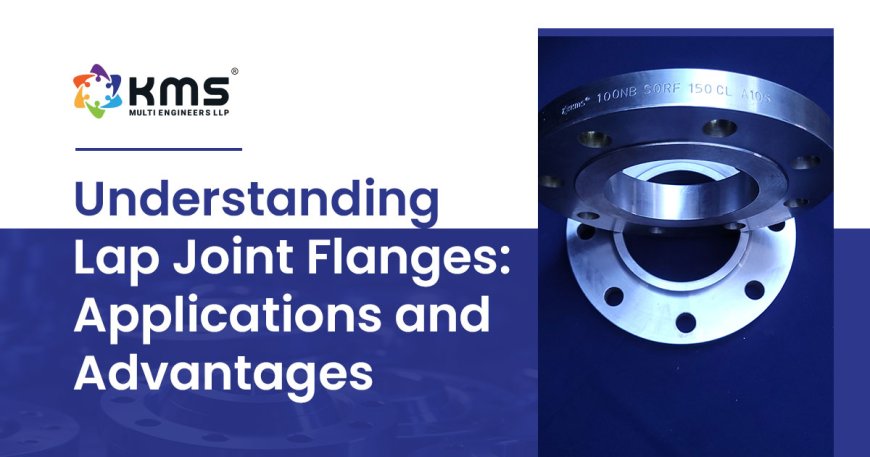Comprehensive Guide to Lap Joint Flanges: Design, Benefits, and Applications
Explore the design, benefits, and applications of lap joint flanges. Ideal for systems requiring frequent dismantling and easy alignment. Learn more now!

Introduction
Lap joint flanges are essential components in various piping systems, particularly where frequent disassembly and easy alignment are required. This guide explores their design, benefits, applications, and more.
Components and Structure
Flange Ring:
- Flat Face: The surface that contacts the gasket to ensure a tight seal.
- Bolt Holes: Evenly spaced holes for bolting the flange to a mating flange.
- Bore Diameter: The inner diameter that fits over the stub end.
Stub End:
- Flared End (Lap Joint): The end with a flared edge where the flange rests.
- Butt-Welded End: The end welded to the pipe.
- Length: Available in short and long patterns depending on requirements.
Materials Used
- Carbon Steel: Common for general applications.
- Stainless Steel: For corrosion-resistant environments.
- Alloy Steel: Suitable for high-temperature and high-pressure applications.
- Nickel Alloys and Duplex Stainless Steel: For highly corrosive or specialized environments.
Design and Dimensions
Lap joint flanges are manufactured according to standards such as ASME B16.5 and ASME B16.47. Key dimensions include:
- Outer Diameter (OD): Varies with nominal pipe size (NPS) and pressure class.
- Inner Diameter (ID): Corresponds to the NPS.
- Bolt Circle Diameter (BCD): Diameter of the circle formed by bolt holes.
- Number and Size of Bolt Holes: Increases with flange size and pressure rating.
- Thickness: Varies by size and pressure rating.
- Height of the Stub End: Available in short and long patterns.
Pressure Classes
- Class 150: Suitable for low-pressure applications.
- Class 300 and Above: For higher pressures and temperatures.
Advantages of Lap Joint Flanges
- Ease of Assembly: Free rotation allows for easy alignment of bolt holes.
- Reusability: The flange can be reused as it is not welded to the pipe.
- Cost-Effectiveness: Reduces labor and installation costs.
- Flexibility: Ideal for systems requiring frequent disassembly.
Applications
Lap joint flanges are used in:
- Low-Pressure Systems: Suitable for water systems and non-critical applications.
- Process Piping Systems: Frequently dismantled for inspection and cleaning.
- Marine and Subsea Environments: Easily aligned and reassembled.
- High-Pressure Applications: Using higher pressure classes for steam lines, high-pressure gas systems, etc.
Installation and Maintenance
Installation:
- Weld the stub end to the pipe.
- Place the lap joint flange over the stub end.
- Align the bolt holes with the mating flange.
- Insert bolts and tighten to the specified torque.
Maintenance:
- Regular inspection for wear, corrosion, or damage.
- Ensure bolts are tightened correctly to prevent leaks.
- Periodic replacement of gaskets.
Comparison with Other Flange Types
Lap joint flanges vs.:
- Weld Neck Flanges: Better for high-pressure, high-stress environments.
- Slip-On Flanges: Easier installation but less robust.
- Socket Weld Flanges: For small-diameter, high-pressure pipes.
Selecting the Right Flange
Consider:
- Pressure and Temperature: Select based on system requirements.
- Environment: Choose materials resistant to the operating environment.
- Frequency of Disassembly: Lap joint flanges are ideal for frequent dismantling.
Conclusion
Lap joint flanges offer significant advantages in terms of flexibility, cost savings, and ease of use. By understanding their design, materials, and applications, you can ensure optimal performance and longevity in your piping systems.
What's Your Reaction?



























